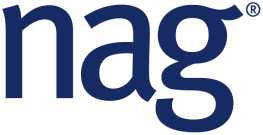My third (final) research stay at Tilburg University
Fortunately, as COVID-19 😫 restrictions gradually lifted, I received confirmation that I could undertake my research stay on-site at Tilburg University in the Netherlands, commencing on April 1, 2022, and continuing until the end of May 2022 😇 (a duration of 2 months).
My initial impression of the Netherlands was overwhelmingly positive 😍. The entire country was teeming with bicycles, which was entirely logical given its remarkably flat terrain. Moreover, I was fortunate to be there during the most enchanting time of the year—springtime ⚘😍! Undoubtedly, everyone is familiar with the renowned Dutch tulips, correct? Throughout my stay, I endeavoured to maximize my experience by exploring the famed cities, all easily accessible and budget-friendly by train. I even had the opportunity to venture to Brussels over the weekend, a mere 90-minute train ride away! During my time in the Netherlands, I had the privilege of attending the celebrated Dutch Flower Parade, known as "Bloemencorso 2022," which was nothing short of breathtaking. Additionally, I had the chance to visit the tulip fields near Amsterdam known as "Keukenhof." It's safe to say that I was exceptionally fortunate to be in the Netherlands during this splendid season!
In addition to my encounters with flowers and my indulgence in delectable cheeses and beers, my primary purpose for being there was to conduct research 😐. I officially commenced my work at Tilburg University on April 4th, establishing my workspace on the 6th floor of the "TiSEM" (Tilburg School of Economics and Management) building. My supervisor, Professor Etienne de Klerk, and my colleague, ESR 8, occupied offices on the 4th floor, making them readily accessible for in-person meetings, which we held on a weekly basis. During these meetings, Professor Etienne de Klerk guided our progress, addressing new challenges and introducing innovative ideas and approaches, many of which were entirely novel to me. Each session was a valuable learning experience. Our specific focus was on the "Factor-width" (FW (k)) (k=2) cone. Within this cone, the positive definiteness of data matrices of size n*n was equivalent to the positive definiteness of the 2*2 submatrices derived from the original data matrices. Consequently, the barrier function was applied to these submatrices. Our objective was to utilize the dual FW cone to address SDP problems arising from the SDP relaxation by Goemans and Williamson, specifically for Chordal graph max-cut problems. Professor Etienne de Klerk introduced an open-source Matlab solver called "Alfonso," which I began using to tackle the aforementioned problems. Furthermore, we routinely discussed challenges and innovative ideas during our weekly meetings, often sharing handwritten or LaTeX documents via email.
 |
| Dutch Kaas |
 |
| Keukenhof |
 |
| Bloemencorso |






Comments
Post a Comment